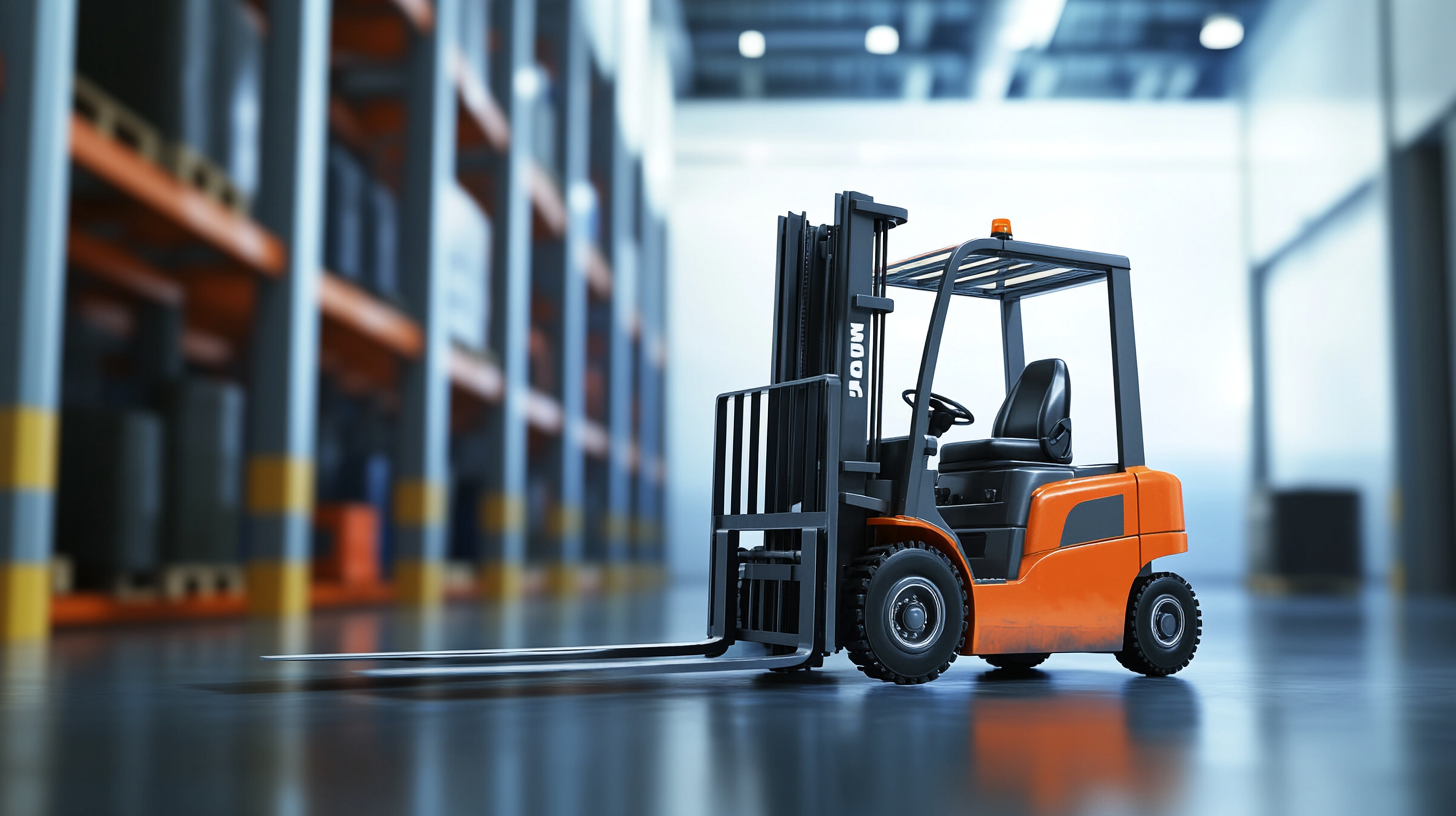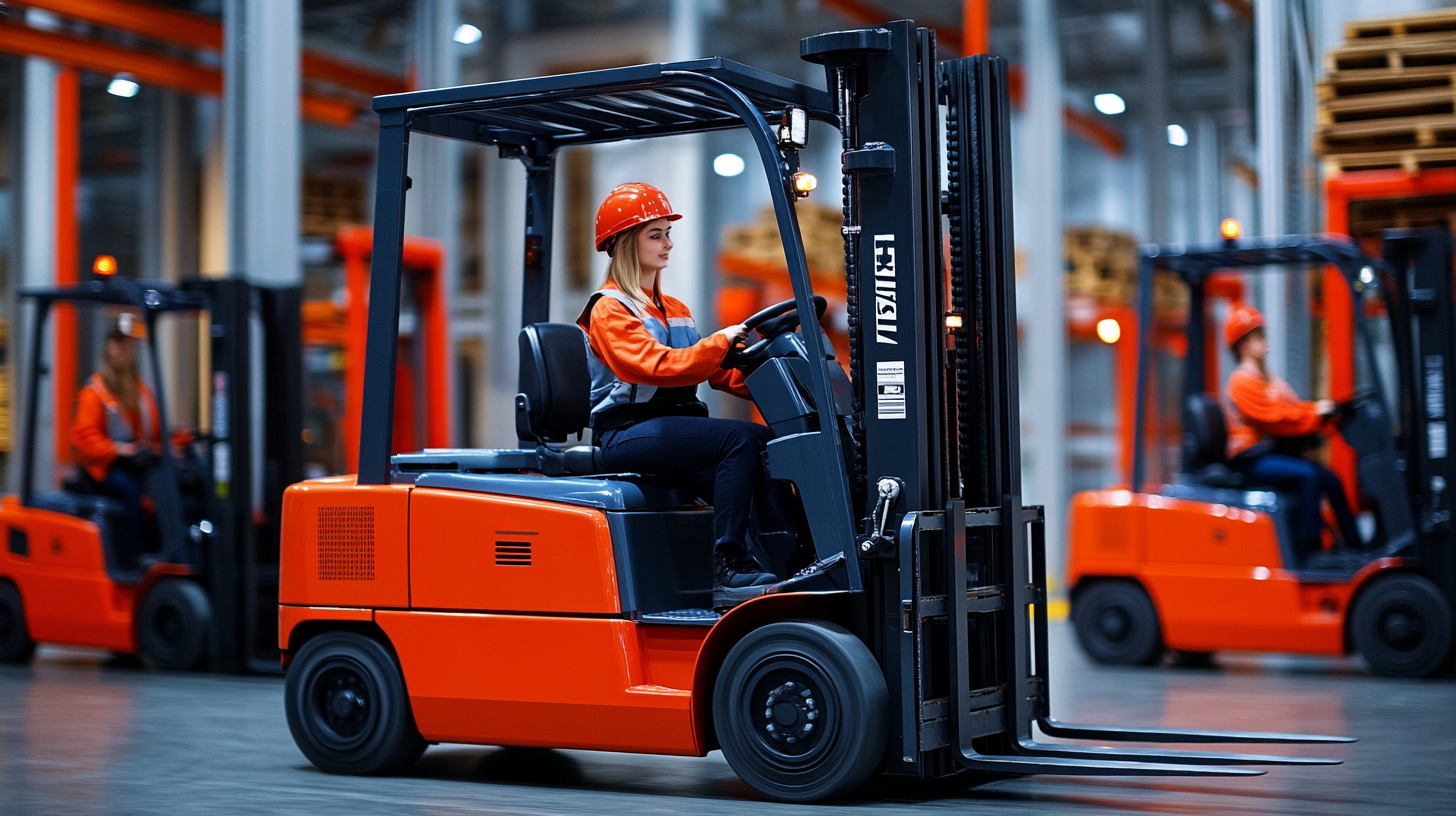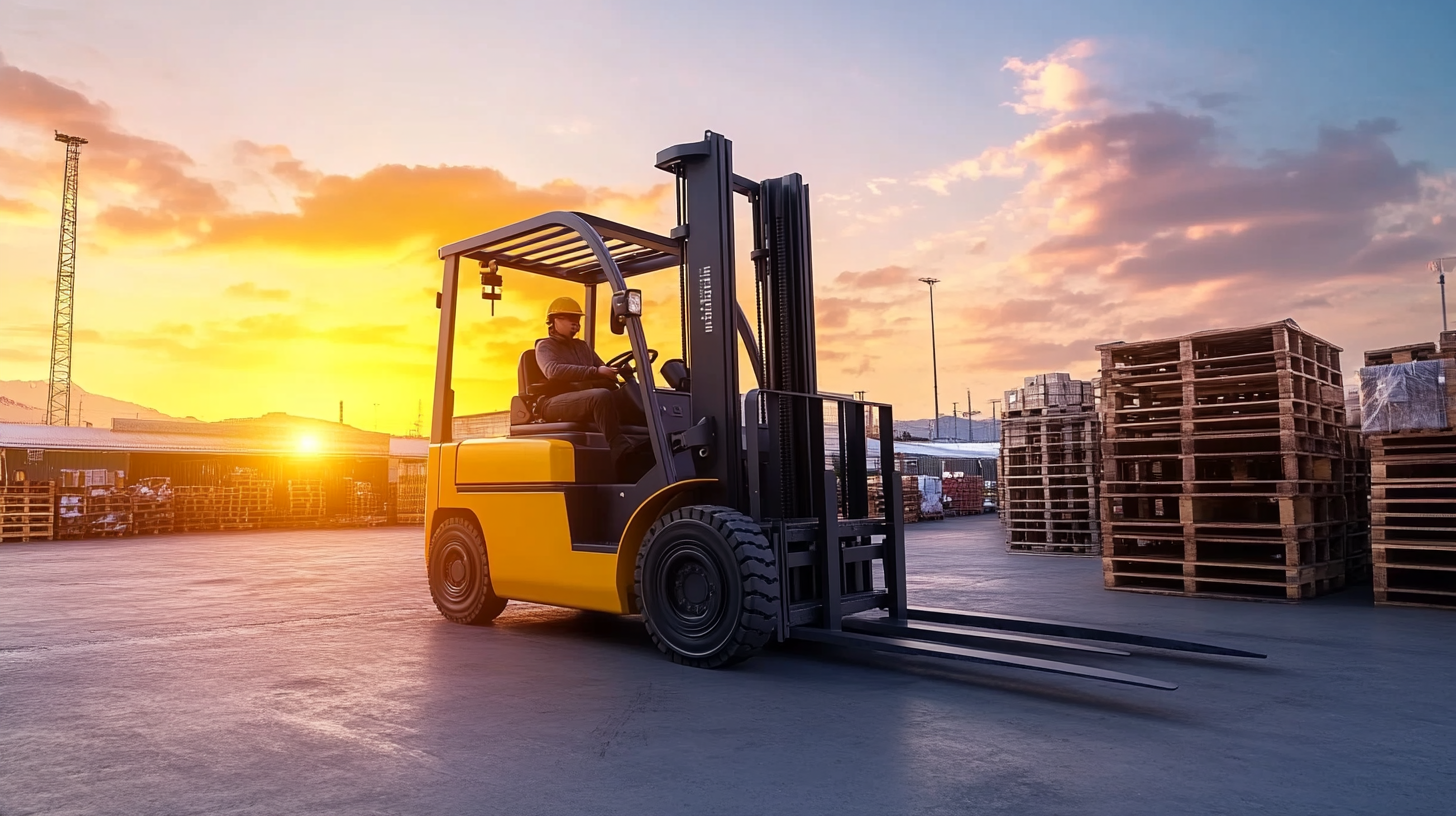
As the logistics and supply chain industry evolves, the need for innovative training solutions becomes increasingly critical. The global forklift market is projected to reach USD 80 billion by 2025, driven by advancements in automation and a growing emphasis on safety standards. In this context, "Forklift Train The Trainer" programs are emerging as a vital component of workforce development strategies. According to a recent report from MarketsandMarkets, effective training not only enhances operational efficiency but also reduces workplace accidents by up to 30%. As companies face the challenges of balancing procurement demands with safety and compliance requirements, investing in cutting-edge forklift training innovations will be essential for maintaining competitiveness in the global market.

This blog will explore the upcoming trends and technologies that are set to redefine forklift training practices by 2025.
As we approach 2025, the landscape of forklift training is undergoing a dramatic transformation driven by emerging technologies. The integration of virtual reality (VR) and augmented reality (AR) is set to revolutionize traditional training methods, providing a more immersive and engaging learning experience for operators. These tools allow trainees to simulate real-life scenarios in a safe, controlled environment, enabling them to practice their skills without the risk of accidents. With detailed feedback mechanisms embedded in these technologies, operators can refine their abilities, enhancing overall safety and productivity in warehouses and distribution centers.
In addition to VR and AR, artificial intelligence (AI) is playing a crucial role in personalizing forklift training programs. AI-driven platforms can analyze individual performance data, identifying strengths and areas for improvement. By tailoring training modules to each operator’s unique needs, these technologies ensure that the learning process is both efficient and effective.
Furthermore, the use of smart sensors and IoT devices on forklifts provides real-time data to trainers, enabling them to monitor operator performance and make data-driven adjustments to training protocols. This synergy of technology not only prepares operators for the challenges of the job but also paves the way for a future of more skilled and competent workforce in global procurement.
The integration of Virtual Reality (VR) into forklift training is revolutionizing the way operators acquire skills and enhance safety. According to a study from the National Safety Council, nearly 100,000 injuries related to forklifts are reported annually in the United States, highlighting the crucial need for improved training methods.
 VR technology provides a safe, immersive environment where trainees can practice handling various scenarios without the risks associated with real-world operations. This innovative approach not only boosts the confidence of operators but also significantly reduces the likelihood of accidents and equipment damage.
VR technology provides a safe, immersive environment where trainees can practice handling various scenarios without the risks associated with real-world operations. This innovative approach not only boosts the confidence of operators but also significantly reduces the likelihood of accidents and equipment damage.
A report by the International Journal of Occupational Safety highlights that organizations utilizing VR for training have seen a 30% decrease in training time while improving knowledge retention rates by up to 75%. This shift towards VR not only enhances the skillset of operators but also aligns with the global trend towards digital transformation in procurement and supply chain management.
As businesses recognize the value of efficient training methodologies, the role of VR in forklift training is poised to become a standard practice, ultimately promoting a safer workplace culture across industries.
In the ever-evolving material-handling market, the methodology for forklift training is undergoing significant transformation. Traditional training methods, often reliant on in-person instruction and extensive paperwork, are increasingly being overshadowed by innovative approaches. These innovations leverage technology, such as virtual reality and simulations, enabling trainees to experience realistic scenarios without the risks associated with real-life operations. This shift not only enhances learning outcomes but also addresses the growing need for efficiency in training regimes to keep pace with market demands.
As macroeconomic trends continue to shape the logistics landscape, businesses must be agile in their training methodologies to ensure operational excellence. Innovative training methods allow for scalability and flexibility, permitting organizations to train more employees in less time while maintaining safety and compliance standards. By embracing these advancements, companies not only improve their procurement processes but also position themselves competitively in a fragmented market that demands continuous adaptation and improvement in workforce training.
| Training Method | Duration (Hours) | Cost ($) | Effectiveness (%) | Safety Improvement (%) | Employee Satisfaction (%) |
|---|---|---|---|---|---|
| Traditional Classroom Training | 40 | 1500 | 75 | 60 | 70 |
| On-the-Job Training | 60 | 800 | 80 | 70 | 75 |
| Virtual Reality Training | 20 | 2000 | 90 | 85 | 95 |
| E-Learning Modules | 15 | 500 | 70 | 50 | 80 |
| Simulated Environment Training | 30 | 1200 | 85 | 75 | 90 |
The evolving landscape of forklift training is witnessing a significant shift towards cost-effective alternatives to traditional training programs. According to a report by the Occupational Safety and Health Administration (OSHA), accidents involving forklifts account for approximately 100 fatalities and 35,000 serious injuries each year in the United States alone. This alarming statistic highlights the necessity for enhanced training solutions that not only ensure safety but also provide financial benefits to organizations.
Emerging technologies such as virtual reality (VR) simulations and online training platforms are proving to be formidable alternatives to conventional methods. A study published by Training Industry found that organizations using VR for forklift training reduced training costs by as much as 30% while increasing training retention rates by 75%. This warrants a reevaluation of training budgets, as investing in innovative training solutions can yield significant savings and improved safety outcomes, ultimately leading to a more skilled workforce.
Additionally, the integration of gamification in training modules is captivating a new generation of operators. With a projected increase in the use of gamified learning tools by 50% by 2025, companies are recognizing that engaging training methods lead to higher participation rates and better performance. These innovations not only cater to the modern learner but also align with the industry's commitment to fostering a safer and more efficient working environment.
As businesses increasingly recognize the strategic importance of procurement, innovative training solutions become essential for enhancing workforce capabilities. Companies are now prioritizing advanced training methodologies that leverage technology, such as artificial intelligence (AI) and analytics, to drive efficiency and improve operational outcomes. By integrating these innovative training solutions, organizations can not only equip their seasonal forklift operators with cutting-edge skills but also optimize their entire procurement processes, ensuring they are ready to meet future demands.
The evolution of workplace learning, particularly with a focus on immersive and interactive training systems, is a key trend for 2025. Embracing this shift will allow companies to develop tailored training programs that enhance employee proficiency in using forklifts and other machinery. Furthermore, as industries continue to navigate global supply chain challenges, investing in employee development through advanced training solutions will be vital. This strategic focus will empower organizations to cultivate a more skilled workforce, ultimately leading to greater innovation and competitiveness within the global market.

Content © 2025 Komatsu. All Rights Reserved
